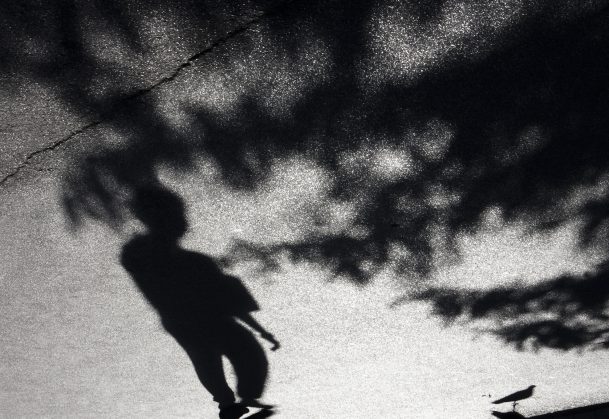Presidential Column
Love Lets Us Learn: Psychological Science Makes the Case for Policies That Help Children


I decided to run for the APS presidency, at least in part, so I could help make the scientific case for policies that support children—parental leave, child allowances and tax credits, publicly funded childcare and preschool. Like many of my fellow developmental psychologists, I’ve been working to bring these policies to the United States for decades. Most prosperous countries already have them in place—indeed that might be a criterion for calling them genuinely prosperous. When my Canadian grandson was born, his parents had six months of paid leave, and his childcare costs $200 a month. But in the United States, passing laws to help children has always been a struggle.
When Joe Biden became president in 2021, I thought wryly that my timing was off. By the time I actually became APS president in June of 2022, I figured, the long-sought early childhood policies would already be in place. After all, they were a central plank of the Democrats’ Build Back Better legislation, and even some Republicans support them. But in the end, it didn’t happen. When that legislation finally became law in the dramatically scaled-down Inflation Reduction Act, the childhood policies got left out. Admittedly, if you have to choose, prioritizing the climate crisis makes sense. There’s no point in helping children if they don’t have a habitable planet left to live on. But it also means that American politics has left children behind once more. So the struggle continues.
To me, this inaction is especially frustrating because the scientific case for early childhood policies just gets stronger every year. The moral case has always been incontrovertible. Surely, taking care of helpless young children is morally admirable, and neglecting them is morally despicable, no matter what happens later. But there is also an increasing amount of scientific evidence that our experiences as children shape our adult lives.
How do we know that? When I wrote my first book in the late 90s, I was actually skeptical. The developmental pathways that lead from infancy to adulthood are very complicated and circuitous. It seemed unlikely that you could demonstrate a clear causal relationship between particular events in childhood and adult characteristics.
The developmental pathways that lead from infancy to adulthood are very complicated and circuitous. It seemed unlikely that you could demonstrate a clear causal relationship between particular events in childhood and adult characteristics.
But in 1998, a landmark series of studies suggested that I was wrong. Researchers at the Kaiser Permanente Medical Group in California analyzed the long-term effect of adverse childhood experiences, or ACES. ACES include poverty, divorce, physical or emotional neglect or abuse, and experiencing violence, addiction, or mental illness in the home. Since then, there have been hundreds of similar studies across the world; a recent meta-analysis combining the results of only the best studies included more than 250,000 people from 17 countries. These experiences are surprisingly and depressingly common: One study found that around 60% of children in the United States experience at least one adverse event, and 1 in 10 children experience four or more. Low-income children are the worst off, but children from all classes and backgrounds are vulnerable.
These adverse early experiences, quite literally, can kill. It may not be that surprising that ACES are associated with lower income and education later in life, perpetuating a cycle of poverty across generations. ACES also lead to substantial increases in adult depression, anxiety, and alcoholism and they predict both perpetrators and victims of violence. But the most surprising result is that adverse early experiences also substantially increase the risk of cancer and heart disease—among our most common and deadly diseases. This is true even controlling for other factors like income and demographics. And, importantly, ACES show a “dose–response” pattern, a hallmark that lets scientists infer causation from correlation. The more adverse experiences a child has, the greater their risk as an adult.
Of course, these outcomes aren’t at all determined. There is lots of variability, and many people who have terrible childhoods become healthy, happy adults. Researchers have also studied what makes some children more resilient. Strong, loving relationships, in particular, may mitigate the effect of ACES; for example, a devoted grandmother can help children get through poverty and violence. Still, the overall effect is consistent and striking, and even people who overcome early neglect and abuse may be at more risk for ill health later.
If bad early experiences lead to bad outcomes, could improving early experiences also improve adult lives? More and more researchers trying to make children’s lives better are looking for the equivalent of randomized controlled trials, the scientific gold standard. Rather than just doing things they hope will help, the researchers carefully compare otherwise similar children who participate in different kinds of programs (or in none at all).
A recent paper in The Lancet showed that a wide range of early interventions change lives later on. Even just giving parents more money through cash transfers can have benefits. Home visitors who help support parents with new children are especially effective. (I still remember the visiting midwife who helped me when I was a lonely young mom in London and pass on her advice to my own children.) In one particularly striking study published in Science, children in Jamaica who participated in a home-visiting program when they were toddlers had higher incomes 20 years later.
New studies show that preschool can also have an effect. Children who attend high-quality preschools are physically and psychologically healthier as adults, have higher incomes, and are more likely to go to college and less likely to go to prison. The high-quality part is important; there is a strong relationship between how good the programs are and how good the results are.
So these scientific results are very consistent. For good or ill, childhood influences our later lives. But just how do early experiences influence later life? Human development is indeed complicated and circuitous, and the answer may be different for different factors—poor nutrition, for example, slows down growth. Moreover, there are undoubtedly interacting cascades of effects; stressed parents make children act out more, which makes parents more stressed. Poverty makes it harder to do well in school, which makes it harder to get a good job. And so on.
But some studies also suggest that, in particular, stressful early psychological experiences, such as ACES, may accelerate the overall pace of development. A number of studies have suggested that children with stressful lives reach puberty earlier. And a study from Allyson Mackey at the University of Pennsylvania and her colleagues, in the Proceedings of the National Academy of Sciences, shows that children growing up with more ACES even get their adult teeth earlier. Another paper by Mackey and her colleagues in Nature Neuroscience Reviews looks at evidence from both human and animal studies. They conclude that poverty, stress, and adverse experiences also seem to make children’s brains grow up too quickly.
Check out this article on the associations between early life adversity and the presentation of social anxiety disorder later in life.
In the paper, Mackey and her colleagues looked at two different kinds of development. One kind involves changes in the physical characteristics of the brain, like the thickness of the cortex or the density of neurons. The other involves the way that brain areas are connected to one another. In both cases, there is a consistent though complicated sequence of development. For example, the brain gets thicker in infancy and then thins out in adolescence. But they found that those sequences unfold more quickly in children who experience more stressful adverse experiences.
The paper also reviews animal studies that show the opposite effect. Young creatures who grow up in enriched and varied environments, with lots of different objects and other animals to play with, have a delayed and extended pattern of brain development and maintain more plasticity for a longer time. Mackey and colleagues suggest that frequent repeated bad experiences may have the most detrimental acceleration effect, while more varied and unusual good experiences may be particularly likely to keep the brain open to learning.
An interesting human example of this kind of enrichment through variation comes from studies of bilingualism, reviewed in a recent paper in Trends in Cognitive Sciences. As we learn our first language, it gets harder to distinguish sounds in another language. An adult English speaker can’t hear the differences between Chinese tones, and a Japanese speaker can’t hear the difference between “r” and “l.” But babies who hear multiple languages seem to keep this window open longer and are better at learning new language sounds, even from languages they’ve never heard before. The narrowing process slows down, in other words. Other studies suggest that this may make bilingual babies better at learning in general.
Why would this be? Why would stress make us grow up faster and a rich, varied, nurturant environment make us grow up more slowly? The answer may come from the biological concept of life history that I described in my last column. Across species, a long, slow life history goes with a flexible, plastic brain that is good at learning. The mammals and birds that depend most on learning, like chimps and crows, also have a particularly long, helpless childhood in which that learning can take place, and adults put a lot of work into caring for their young during this extended childhood. Humans are the most dramatic example of this kind of slow life history.
But individual animals or people may also develop different life histories, depending on their circumstances and environment. A “live fast, die young” life history makes more sense when resources are thin on the ground and life will be predictably harsh. Zeroing in quickly on a few adaptive and effective strategies may make more sense than taking the time to explore more possibilities. Investing in a longer, more leisurely life makes more sense when there are going to be enough resources to allow the young to thrive and parents to help them.
A “live fast, die young” life history makes more sense when resources are thin on the ground and life will be predictably harsh. Zeroing in quickly on a few adaptive and effective strategies may make more sense than taking the time to explore more possibilities. Investing in a longer, more leisurely life makes more sense when there are going to be enough resources to allow the young to thrive and parents to help them.
Early signals of adversity or abundance, neglect or support, sameness or variability, might be especially important in determining these patterns. Animal studies support this idea. Baby mice who have mothers who lick and touch them develop brains that learn better. The licking doesn’t change things by itself, but it does signal that the baby will be cared for.
Plasticity and the ability to learn are especially important if you are growing up in an environment that is complicated but comprehensible. If the world around you is entirely predictable or entirely random, learning won’t help you much. But if each generation creates an environment that is a bit different from the previous one, as humans do, then a flexible brain and a long childhood to use it in will be especially valuable.
This life-history perspective may also help explain some puzzling features of the effects of early experience on later life. There seems to be something special about childhood experiences. Why would witnessing a shooting when you’re 5 lead you to have cancer at 50? How could a home visitor who helps your parents out for a couple of years when you’re a toddler make you healthier and wealthier 20 years later? You see this especially clearly in many of the preschool studies. Children who attend high-quality preschools often don’t do much better on standardized tests later than children who don’t. In fact, that originally led policymakers to think that the good effects of preschool faded away as children grew older. The biggest effects appear much later and are strongest for things like income or health rather than academic skills themselves.
The life-history perspective may help explain some of these puzzling “sleeper effects.” We know that stressful adverse childhood experiences lead to changes in chemicals like cortisol in the developing brain. These changes may be signals that the environment is harsh and nurture is in short supply, and so they produce an accelerated, less flexible and resilient life history. On the other hand, early signals that nurture and resources are plentiful, that the world is interesting and complicated, and that you have plenty of time to play and explore, may have the opposite effect. Even just hearing two different languages may signal that it’s worth attending to language sounds and keeping an open mind about what languages will be like.
High-quality preschool may indeed give children particular academic skills. But it may also help keep children open to new possibilities for longer. Deciding to apply for college, or resisting short-term temptations, may have as much to do with a generally hopeful attitude as with learning to read a few years earlier.
Again, it’s important to say that none of this is deterministic. Animal studies show that windows of plasticity may open and shut across development, depending on circumstances and contexts, and adults may be able to recover their childhood openness in the right situations.
But, of course, as the ACES studies show, far too many children and parents don’t have the resources they need to allow a long, exploratory childhood to unfold. The scientific results all tell the same story when it comes to policy. From family allowances, to parental leave, to high-quality preschool, supporting young children is the best way to ensure a new generation of successful adults. The new idea is that these policies work not because they make children develop faster, but because they let children be children longer.
In spite of the recent disappointments, I still hope that APS can help translate developmental science into childhood policy. The science tells us that love allows learning, nurture leads to resilience, a rich environment generates a sense of possibility. We need policies that ensure all children experience that love, nurture, and richness. That’s the best recipe for a thriving future in a changing world.
Related content we think you’ll enjoy
-

Childhood Adversity
Psychological research reveals the long-lasting cognitive, social, and neurobiological consequences of stress and trauma experienced in childhood. Visit Page
-

The New Riddle of the Sphinx: Life History and Psychological Science
In her inaugural column as APS President, Alison Gopnik explores how the life-history perspective is suited to the mission of APS. Visit Page
-

Childhood Adversity Is Linked with Risky Health Behaviors and Negative Life Outcomes
Children often show remarkable resilience, but survey data shows that repeated exposure to adversity in childhood can have a significant impacts on health and well-being later in life. Visit Page
Feedback on this article? Email apsobserver@psychologicalscience.org or login to comment.





APS regularly opens certain online articles for discussion on our website. Effective February 2021, you must be a logged-in APS member to post comments. By posting a comment, you agree to our Community Guidelines and the display of your profile information, including your name and affiliation. Any opinions, findings, conclusions, or recommendations present in article comments are those of the writers and do not necessarily reflect the views of APS or the article’s author. For more information, please see our Community Guidelines.
Please login with your APS account to comment.